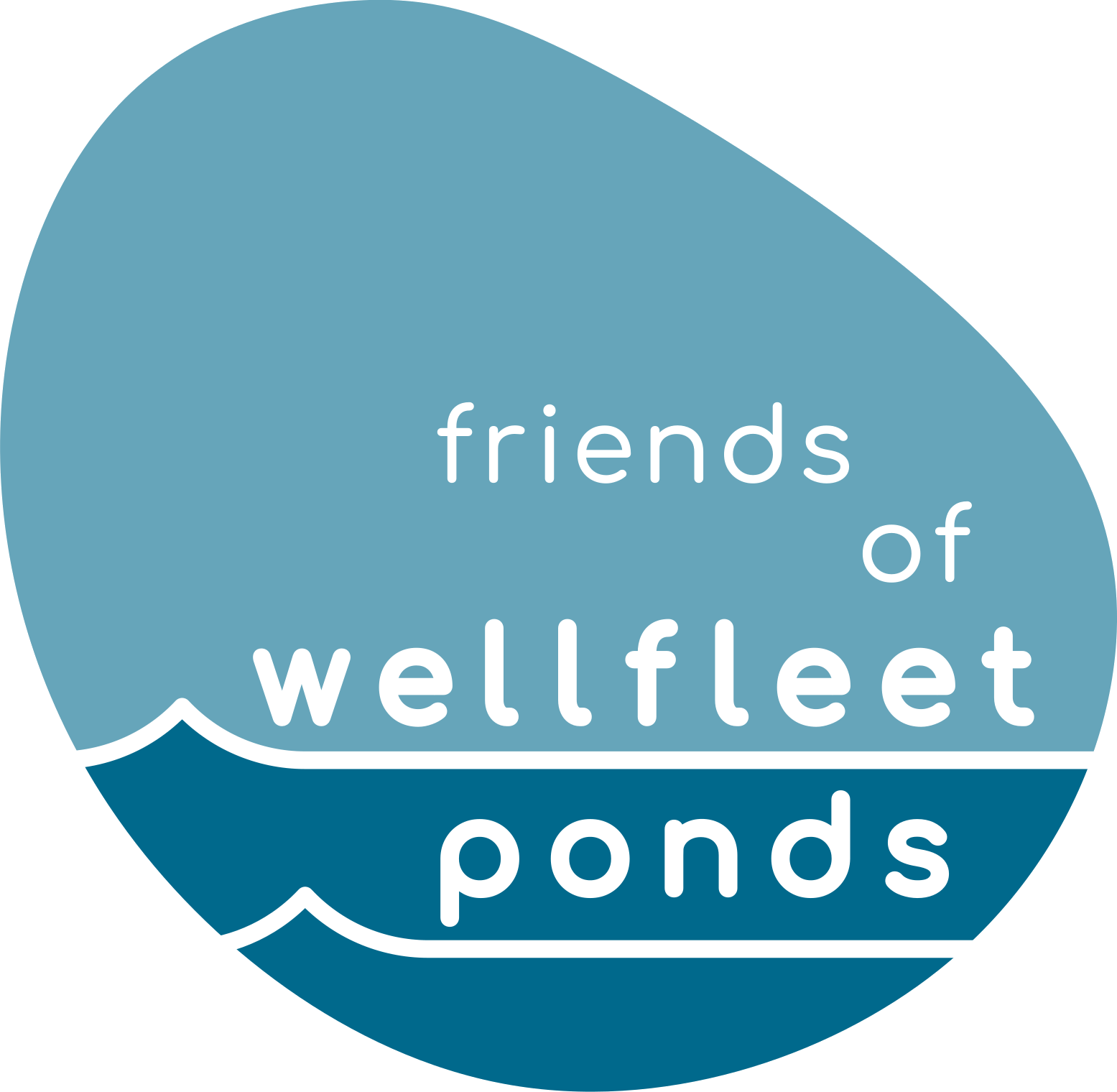A large variety of aquatic plants and animals live in and around Wellfleet ponds. This section of the website will introduce you to a few of the organisms you might encounter, with links to more comprehensive websites that may be used for species identification and to learn more about individual species.
If you know one Wellfleet pond, you know ONE Wellfleet pond …
This also applies to the flora and fauna that inhabit or visit our ponds. Although there are many common species that our ponds share, the variety of plants and animals and their relative abundances can vary widely from pond to pond.
Wellfleet ponds support species that fall into a number of classifications based on their adaptations and strategies for survival in aquatic habitats.
An endangered species is one that is in danger of extinction throughout all or a significant portion of its range.
A threatened species is considered likely to become endangered in the foreseeable future in part or all of its range (e.g. the thread-leaved sundew).
A native species originated and developed in its surrounding habitat and has adapted to living in that particular environment. Its presence is the result of natural processes not human intervention.
A non-native species originated somewhere other than its current location and has been introduced to the area where it now lives (usually by human activity).
An invasive species of plant or animal is one that outcompetes other species, causing damage to an ecosystem. Invasives can be either native or non-native.
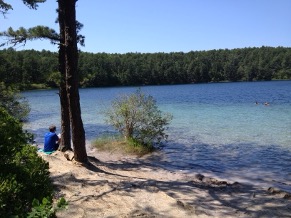
At least fifty different aquatic plant species can be found along Wellfleet pond shorelines. Several species of fish, frogs, and turtles can also be seen, along with a variety of aquatic invertebrates, including dragonflies, damselflies, and caddisflies. Hundreds of species of plankton, zooplankton, and algae also inhabit our pond waters and sediments.
If you’re fortunate you may observe many of these creatures during your visits to our ponds. Do enjoy observing and photographing, but please leave all the inhabitants undisturbed. This section highlights a few examples of pond dwellers that are worth getting to know.
Fishes found in Wellfleet Ponds

The Alewife is one of two species of native river herring that make spring runs from Cape Cod Bay into Wellfleet ponds (specifically the interconnected Higgins, Herring, Gull and Williams ponds chain), where they breed and lay eggs. This life cycle pattern – migrating from saltwater to breed in freshwater – defines Alewives as anadromous. The young fish, known as “fry” spend their first spring, summer, and the early part of the fall in our ponds, first eating zooplankton and then moving on to smaller fish. The fry grow to a size of approximately 4 inches before migrating back to the ocean where they mature over the next 3-4 years. Adult fish average 10 to 12 inches long and can typically live for eight years. Both alewives and the other species of river herring, the Blueback Herring, are repeat spawners (iteroparous), laying eggs every spring and returning to the ocean at the end of the spawning season (late May). Both species of river herring exhibit “natal homing,” migrating to the same rivers and ponds every year to spawn.
The Yellow Perch is an easily observed fish in many of our Wellfleet ponds. Adults average 4 -10 inches long and can live for 9 to 10 years. Adult perch eat smaller fish and provide food for fish-eating birds. When standing still in a pond you can often see these fish circling around your feet!
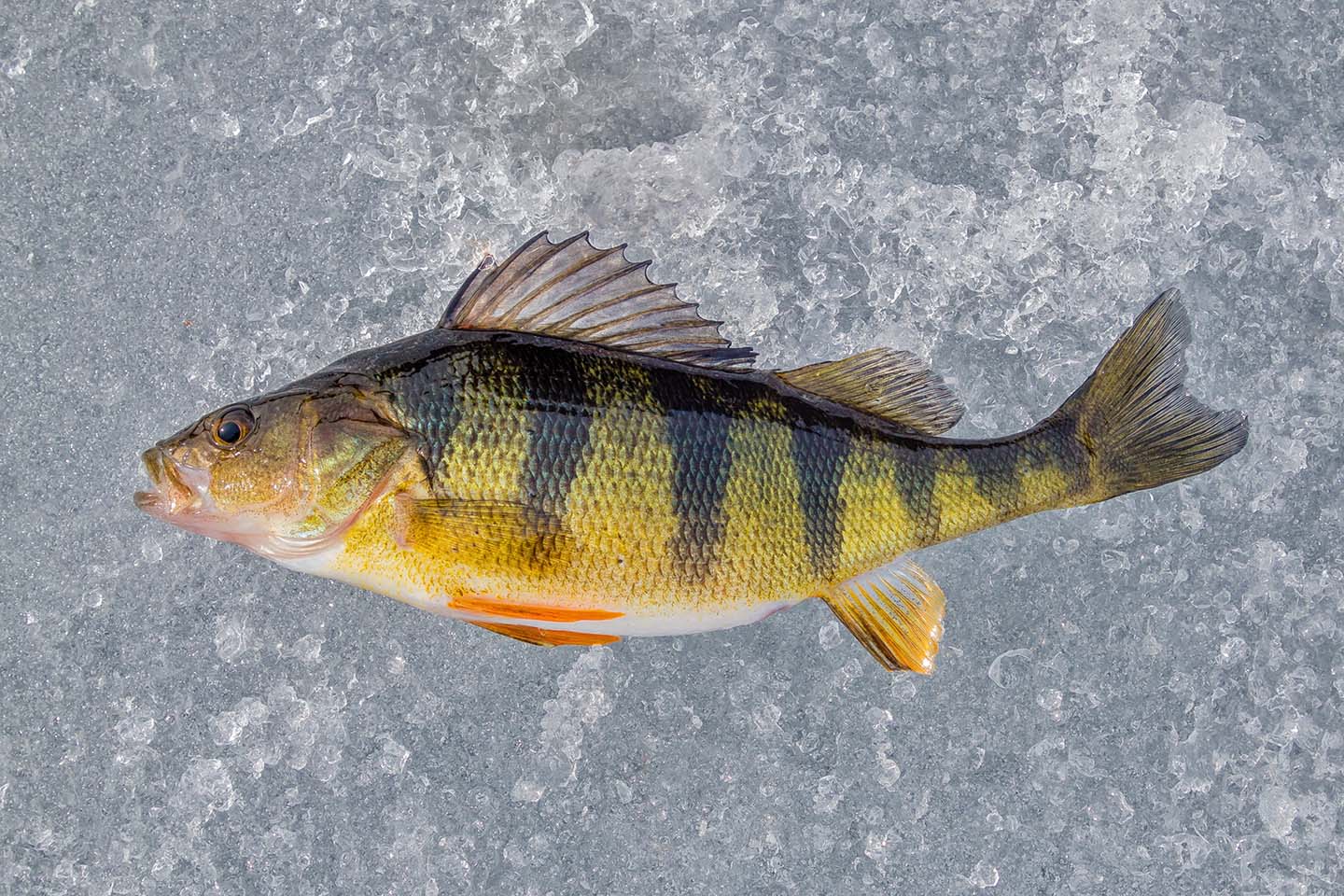
Banded Killifish are a common native fish in Cape Cod ponds. They eat aquatic insects throughout a pond’s water column including the surface. Mature killifish are usually 2 to 4 inches long and are prey for fish-eating birds such as herons, mergansers, and kingfishers.
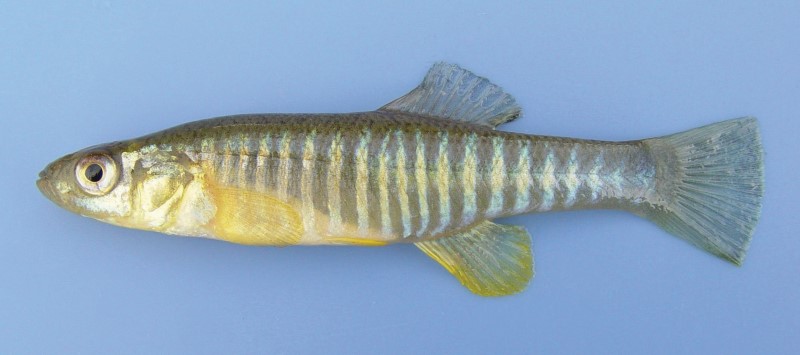
Frogs & toads common to Wellfleet Ponds
Green Frogs are native to northeastern Massachusetts and range in size from 2 to 4 inches. They are generalists, eating a wide variety of prey, from insects to small snakes to birds. Their call sounds like a banjo’s “plunk.” In the early spring females lay a thousand or more eggs at a time as a film on the water’s surface. Green frog tadpoles are typically the larger ones seen swimming along the edge of our ponds. The tadpole stage lasts one to two years. As winter approaches, these frogs hibernate at the bottom of the pond. They lie on top of the sediment or under waterlogged leaves and other debris where they continue to absorb oxygen through their skin.
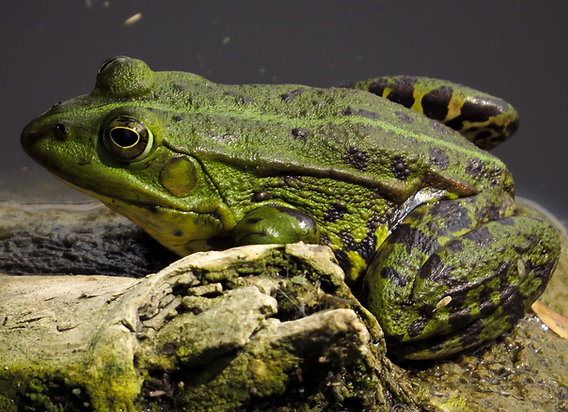
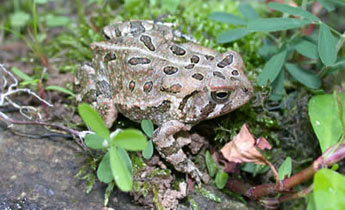
Fowler’s Toads are smaller than green frogs, 2-3 inches long and the adults live on land (above). Their small black tadpoles (below) can be found in Wellfleet ponds from early spring to mid-summer, at which point the juvenile toads, at less than an inch long, leave the ponds to begin their life on land.
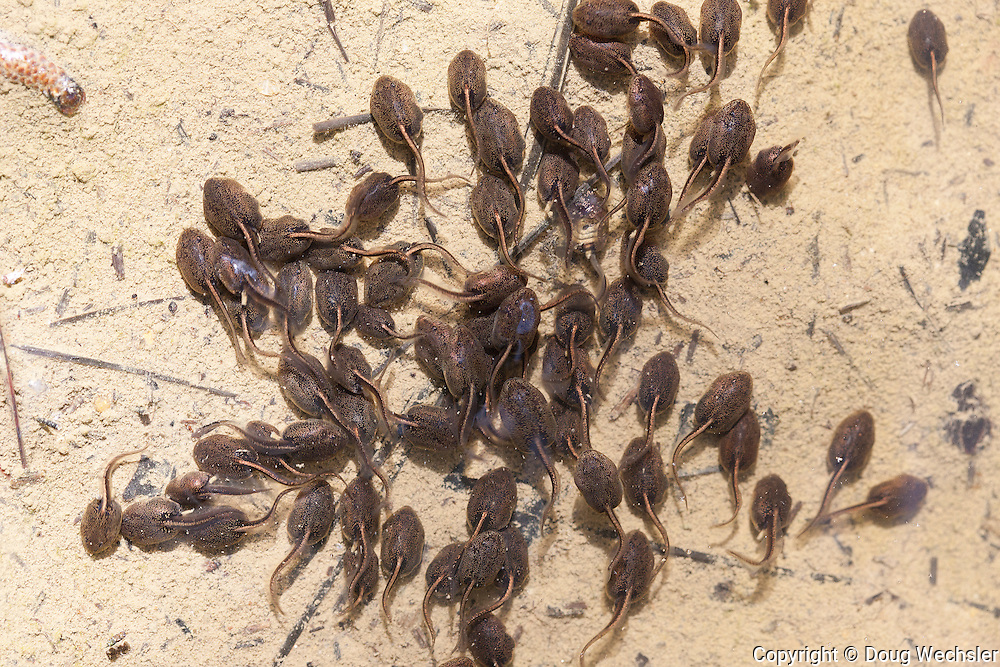
Turtles common to Wellfleet Ponds
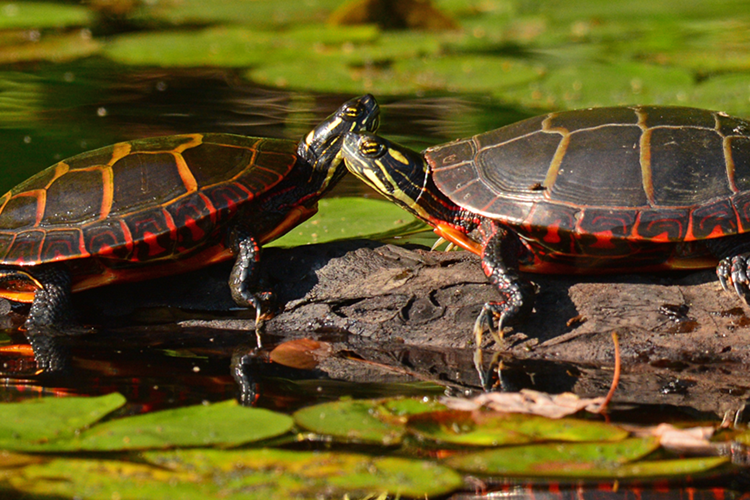
Painted Turtles can occasionally be seen basking in the sun on branches or logs sticking out of the water. They are one of the most common turtles seen in Massachusetts. They are omnivores and eat a varied diet of aquatic plants, small fish, and snails.
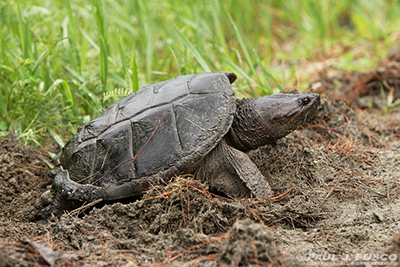
Snapping Turtles can sometimes be observed in both in the water and on the shores of several Wellfleet ponds. They are omnivores when young but as they age their diet becomes more vegetarian. They have three distinct ridges on their upper shell (carapace) and can grow up to 19 inches long!
DID YOU KNOW?
A snapping turtle’s neck can stretch the length of its body! Be sure to give this turtle plenty or respect and lots of space as they can be aggressive.
Dragonflies & Damselflies of Wellfleet Ponds
Native Widow Skimmers got their name because, unlike most other dragonfly species where the male stays near the female after the eggs are laid, the male leaves once the eggs have been deposited. Male widow skimmers have white patches in the middle of each wing, while the females and immature males do not.
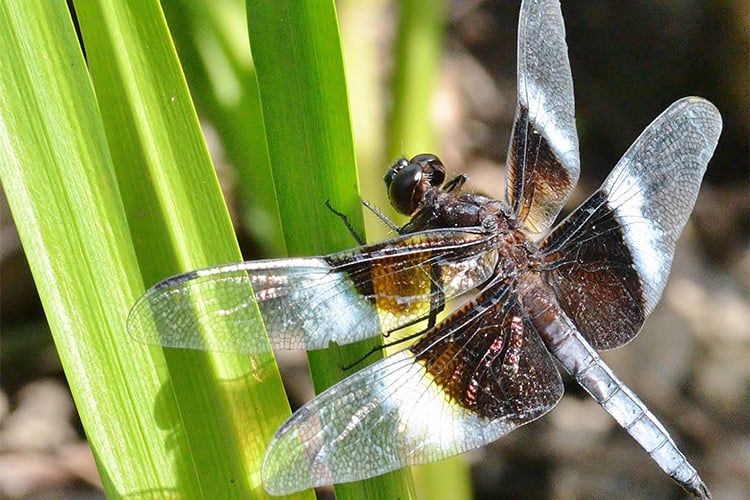
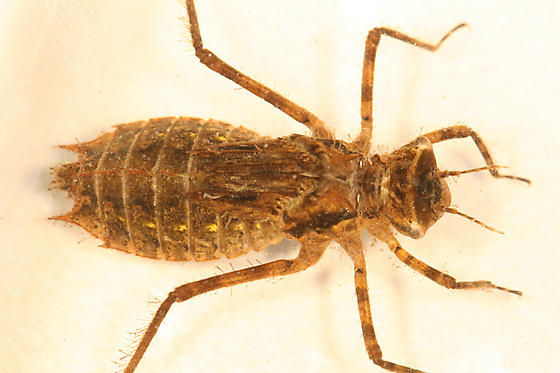
Widow skimmer nymphs (larval stage) live in the pond and eat small aquatic insects for one to two years, continuing to grow until they are mature enough to molt one last time. At this point, the nymphs crawl out of the water onto an exposed plant stem where they make their final molt and fly away as adult dragonflies.
DID YOU KNOW?
Mosquitoes have little success breeding in kettle ponds, primarily due to the presence of predatory fish and frogs which eat mosquito larvae.
The Common Blue Damselfly is another often-encountered inhabitant of our ponds. Damselflies hold their wings alongside and parallel to their body, in contrast to dragonflies which hold their wings away and perpendicular to their body when resting. Once emerged from its nymphal stage, the adult damselfly lives an average of 12 days. The males have a bright blue body, whereas the females’ body color can range from brown to orange red to purple.
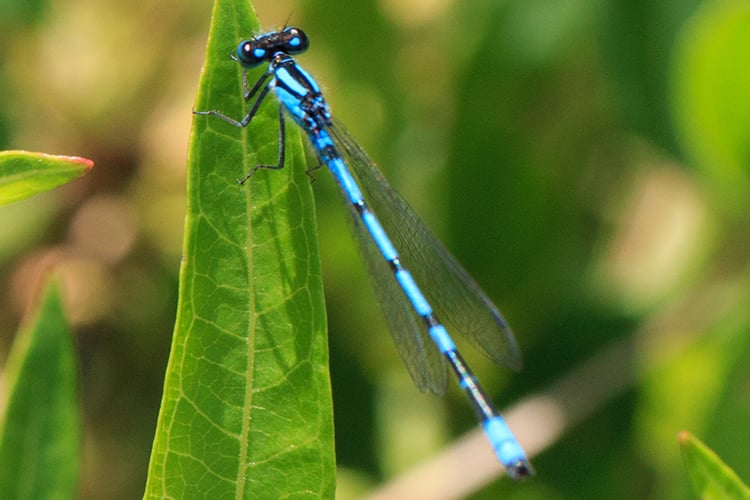
Freshwater Mussels in Wellfleet Ponds
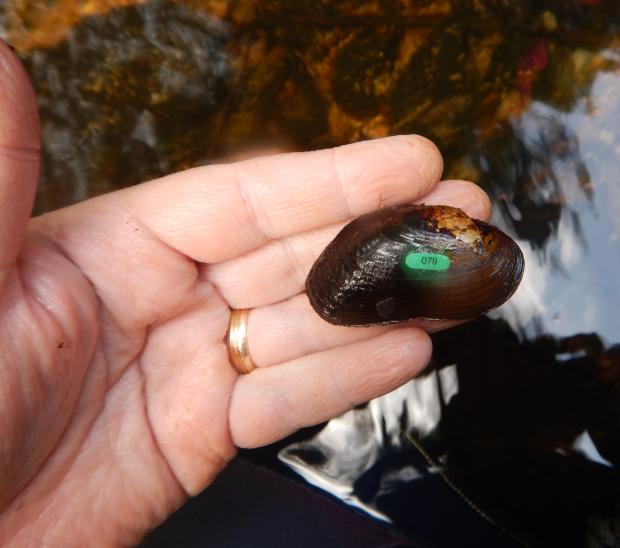
At least two species of native freshwater mussels can be found in several of the Wellfleet ponds. Most These mussels occur in ponds with higher-pH and alkalinity levels, where there’s enough dissolved calcium to enable shell formation. The majority of freshwater mussel species in Massachusetts are considered endangered or of special concern.
Like their saltwater cousins, freshwater mussels eat plankton and other small organisms by filtering water that passes over them. They remove potentially harmful debris like silt and algae, making the water cleaner for everyone. One large mussel can filter up to 15 gallons of water in a single day. That’s a lot of cleaning!
DID YOU KNOW?
Most freshwater mussels in Massachusetts are in danger of disappearing. Mussels filter and clean water and they are sensitive to certain chemicals and other human pollutants.
Birds at the Ponds
Many species of birds can be observed in the wooded areas around our ponds. Waterbirds and wading birds, including ducks, loons, mergansers, herons, and even gulls can also be seen in Wellfleet ponds.
The Belted Kingfisher is often seen at Wellfleet ponds, diving headfirst into the water to catch fish and sitting on dead tree branches nearby. Adult kingfishers are 13 inches long and easily recognizable by their ragged crest, long and thick black beak, blue upper body, and loud, strident, rattling call. Males have a broad blue-gray breast band. Females have an additional rusty colored breast band.
The Merlin Bird ID app, created by the Cornell Lab of Ornithology, is a great tool to use to identify birds by call or sight:
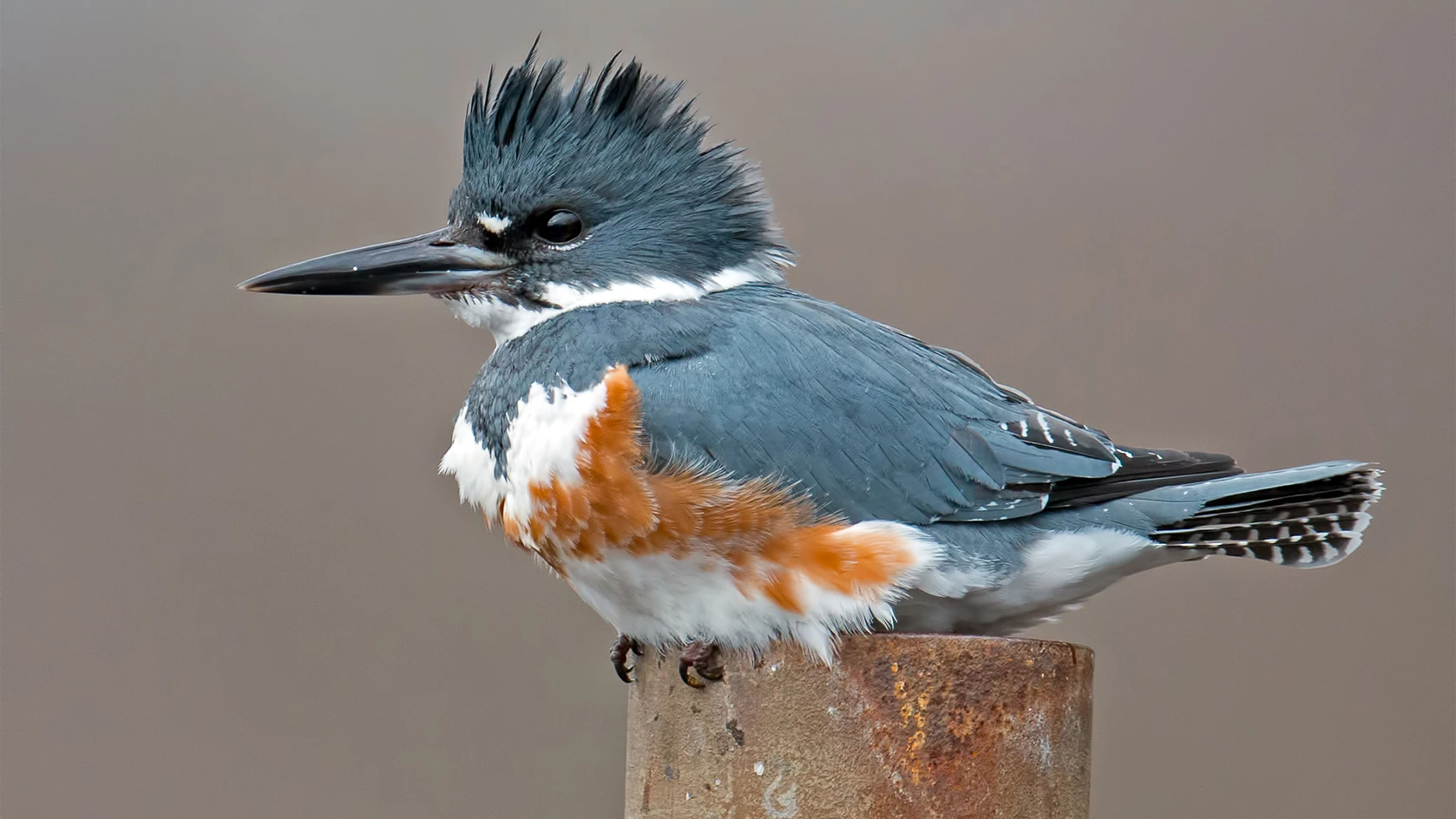
DID YOU KNOW?
Kingfishers nest by tunnelling into vertical or steep dirt banks to form a nest chamber. Both females and males take part in the digging.
A few native aquatic plants to look out for in Wellfleet Ponds
The Thread-leaved Sundew is a threatened species in Massachusetts due to the loss of wetland habitat. This habitat loss is primarily the result of recreational use and development. Mosquitoes often make up a large part of the sundew’s diet. The plant captures its prey by secreting droplets of a sticky liquid on the hairs of its leaves which trap the hapless insect.
Fun fact: early settlers used the red fluid from sundew plants as ink!

DID YOU KNOW?
Three native species of sundew, a rare carnivorous plant, grow on the shores of some Wellfleet ponds. So be sure to stay on the trails and be respectful of restricted areas.
For more on carnivorous plants at Wellfleet ponds, please visit massaudubon.org.
Two species of native Quillwort are considered endangered in Massachusetts (the Acadian and Lake Quillwort). Quillworts are perennial, aquatic, and reproduce via spores rather than flowers. They grow submerged in ponds as a rosette of linear leaves which look somewhat like chives.
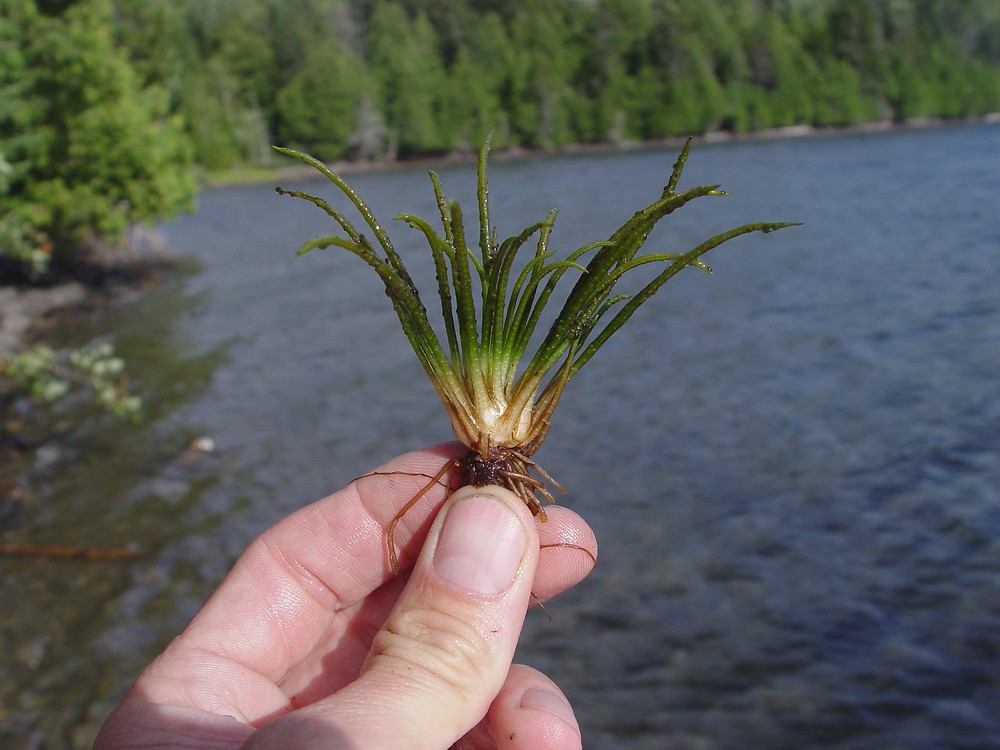
The Yellow Water Lily (aka Spatterdock or Cow Lily) has large arrowhead or heart-shaped leaves with a prominent central vein and rounded lobes that often overlap. Each flower has only three petals!
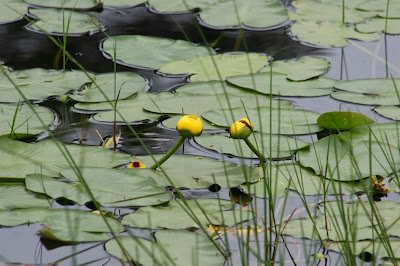
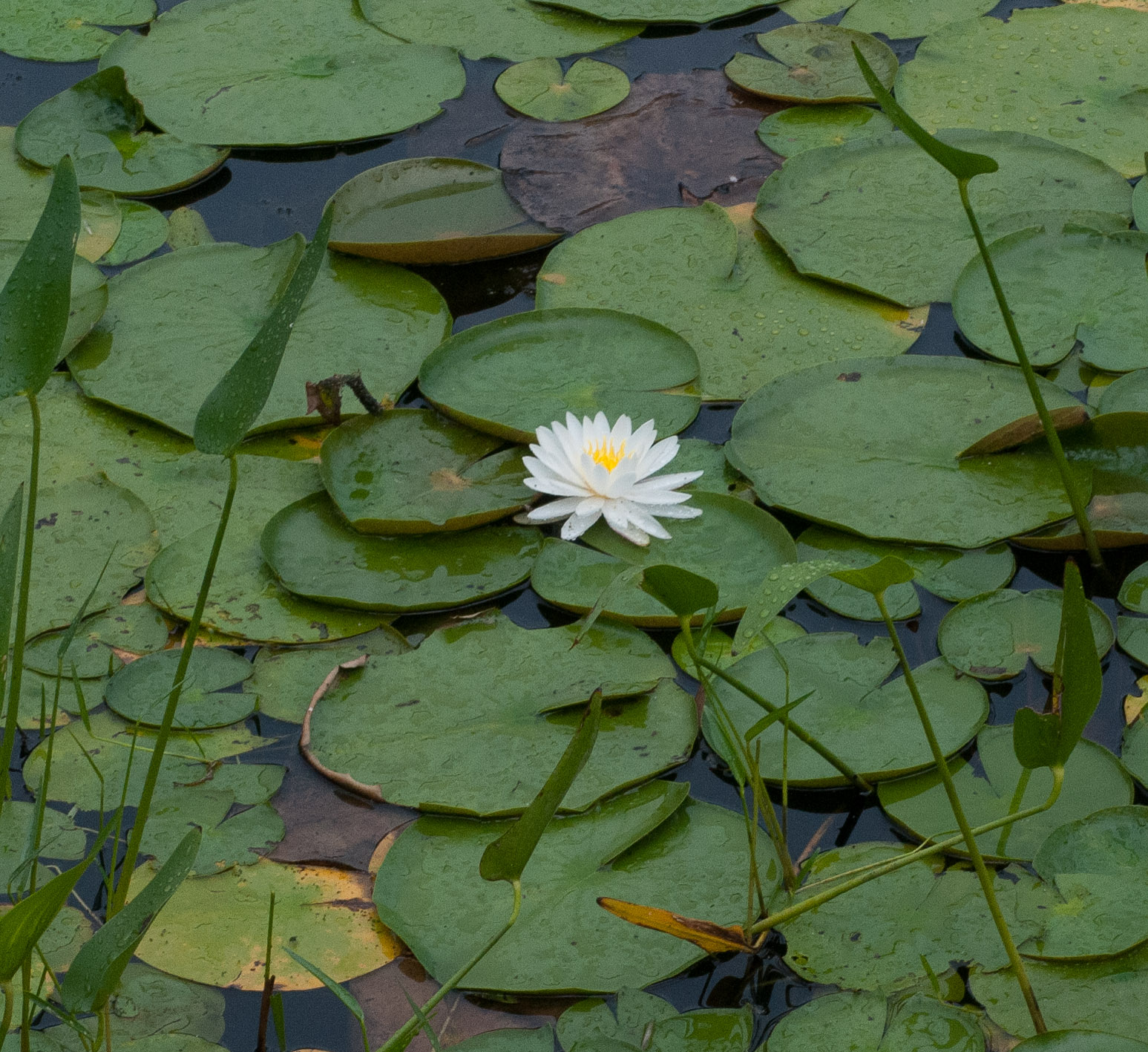
The Fragrant Water Lily is a native rooted aquatic perennial with large floating flowers and leaves. Each flower contains more than 25 petals! After pollination, the flower stalk contracts and creates a globe-shaped fruit which matures under the water. Eventually the fruit/seed pod will break away and float to the surface of the water where it can be eaten by wildlife, distributing the seeds. Fun fact: this species of water lily is considered an invasive exotic in California and Washington.
An invasive species to watch out for in Wellfleet Ponds
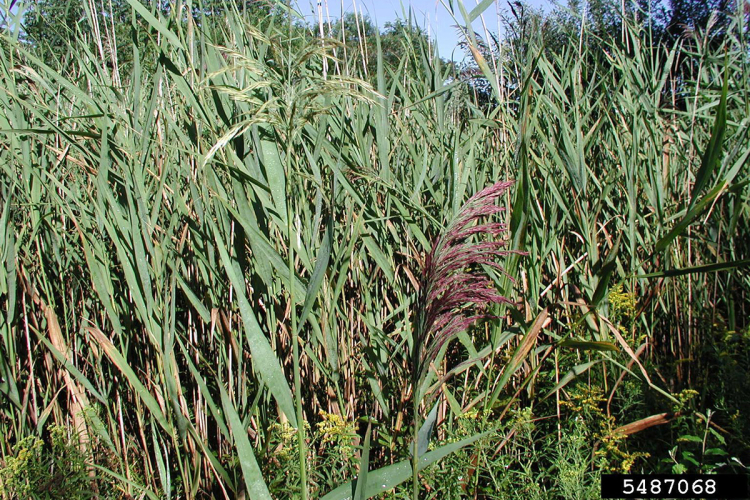
Phragmites australis (Common Reed) is an invasive perennial grass native to Europe and Asia. It can grow as tall as 14 feet by late summer, forming dense stands that can quickly take over the shoreline of ponds displacing native grasses and aquatic plant. This decreases the plant diversity around ponds reducing the native habitat that local wildlife depends on. This invasive species is almost always found in wetlands, so control efforts are subject to the Massachusetts Wetland Protection Act.
Additional resources for exploring the flora & fauna of Wellfleet ponds
Online Field Guides
Phone Apps
you can use to help identify plants and animals observed in and around Wellfleet ponds:
iNaturalist can identify plants and animals, including insects, amphibians, and reptiles.
Here is an opportunity to get involved!
New Cape Cod Pond Watchers Bio-Survey Program Association for the Preservation of Cape Cod (APCC)
This APCC program aims to engage pond groups and other interested persons to be citizen scientists and document their observations of life in and around the Cape’s freshwater ponds.
A field observation form is provided along with supporting materials to assist you in basic identification of plants and animals. Documenting observations of wildlife and plant life will help to complete the full picture of our Cape ponds, individually and regionwide.
